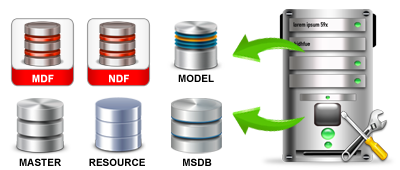- Home
- About Us
- Recovery Services Individual RecoveryEnterprise RecoveryAdditional Recovery
- Software
- Testimonials
- Locations
Recovering a 'bootable' hard drive
Legacy applications are often hardware dependent, so when we recover the data we must provide a 'bootable' duplicate cloned hard drive
Recovering a bootable hard drive
Data loss is a common problem for many CT applications and with medical imaging systems now storing upwards of a million images, this can prove disastrous to any nuclear medicine department. This is exactly what happened when Philips Medical Solutions approached Data Recovery Specialists with a critical predicament, whereby St Vincents University Hospital in Dublin had suffered a failure with their CT scanner.
Working in partnership with Data Recovery Specialists, Philips engineers responded immediately narrowing the problem down to the hard disk drive. The drive was part of a Pegasus Workstation supporting the scanner, which stored the operating system, application and images. Brendan Cummins of Philips Medical Solutions stated “problems arose because of the age of the system complicated by local patches that were not supported by Philips. The customer wanted all these implemented so the only solution was a full data recovery”
Virtual machine backups remedy outdated legacy backups
Virtual machine backups are widely available, but many shops are ignoring the technology until their application performance suffers.
Increasing your use of server virtualization is one of the easiest ways to prove that your backup process is antiquated. In other words:
If 20% of your server infrastructure is virtualized, you may be able to use any approach to virtual machine (VM) backups that you want, including agents inside each VM and a backup server running software that is a few years old and presumed to be "good enough."
But when you get to 50%, 75% or 90% virtualized, legacy backup will significantly hinder the performance of your highly-virtualized, converged or hyper-converged infrastructure.
The problem is twofold:
Old backup software: In many enterprises, the backup team is intentionally a version or two behind, so that they can be assured that the backup software is fully patched and the bugs have already been mitigated. Unfortunately, with some legacy backup software, two versions can be three or more years behind; meaning it doesn't make use of modern APIs such as Microsoft VSS for Hyper-V or VMware vStorage VADP. So, when those legacy approaches are applied to a highly virtualized environment, their mechanisms decrease the performance of production VMs and the underlying hosts.
VMware Data Recovery 2.0 – the upgrade process from earlier version
How to upgrade from VDR 1.2? The new VMware Data Recovery 2.0 (VDR) has been released together with the release of vSphere 5 – VMware vSphere 5 available for download – and since there is quite a few upgrades planned ahead, it might be handy to have it written/bookmarked on my website as well. The upgrade process is simple since all the configuration data (jobs, schedule, retention policy etc…..) is stored at the destination.There is several scenarios possible since you might use as a destination different options:
- NFS
- VMDK stored on Datastore
- CIFS
How to proceed with the upgrade of VDR to the latest release?
01. Remove your backup destination disks from your VDR VM – So the first thing to do if you use VMDK as a destination on a datastore, is to “unlink” this virtual disk from your existing VDR 1.2 appliance. So first look at the configuration of your existing VDR and see where is the destination. If it’s a VMDK on a datastore, then you can simply remove the disk from the VM but leave the other radio button alone !!

How to repair Microsoft SQL database

Today we will show how to repair corrupted MS SQL database.
In MS SQL Studio run new query:
1. dbcc checkdb(‘DB-NAME’) with no_infomsgs
DB-NAME is a name of your corrupted database. If this is completed without any errors then the database does not need to be repaired.
2. Alter database DB-NAME set SINGLE_USER
Before we begin repairing the database, the database must be set in single user mode.
3. dbcc checkdb(‘DB-NAME’,REPAIR_REBUILD)
There are number of repair model usually we use first REPAIR_REBUILD. When everything is ok go to step 5.e (multi user mode) If not, go to next step.
4. dbcc checkdb(‘DB-NAME’,REPAIR_ALLOW_DATA_LOSS)
Copyright © 2024 DataRecoup Recovery Services. All Rights Reserved. Designed by DataRecoup Lab.




